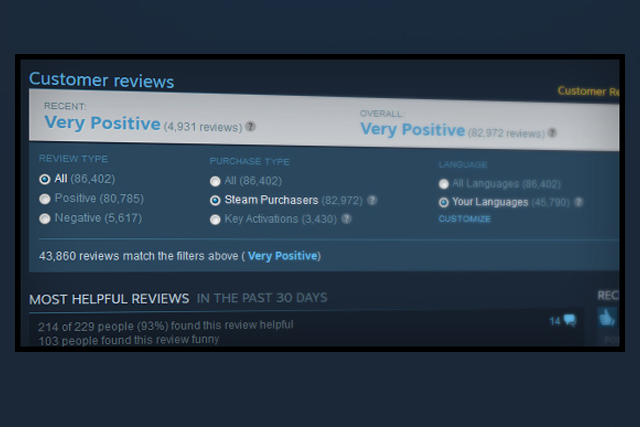
Reviews from users who didn’t pay for the game in question will no longer contribute to its user score, according to a report from Polygon. This doesn’t apply to games that are free or free-to-play.
However, if you played a game during the free weekend promotions that various publishers often run on Steam, your review won’t contribute to that title’s user score. Likewise, if you received the game as a gift, you won’t be able to have an impact on its user rating.
Valve took similar steps to improve the review system in September 2016, when it was decided that only users who bought a copy of a game via Steam could contribute to its user score. This was done to ensure that the score couldn’t be inflated by users who were given a free key to the game by a developer.
There are well over 10,000 titles available on Steam, so it makes sense that Valve would want to give users the best possible rating system to differentiate the good from the bad. The latest change, like the tweaks made last September, seems to be a step in the right direction.
It would be incredibly difficult, if not impossible, to create a ratings system that accurately reflects a consensus of opinion between the 125 million people who own a Steam account. However, reviews submitted by people who spent cold hard cash on a game are likely to have more merit than those submitted by users who only played for a weekend, and didn’t part with any money.
Editors' Recommendations
- A Redditor ‘didn’t know’ about the Steam Deck, so they built their own
- The Steam Deck OLED needs burn-in protection
- Steam Year in Review 2023 is live — here’s how to see your Steam Replay
- After using the Legion Go, I’m finally thankful for my Steam Deck
- Half-Life gets a free update and Steam Deck verification for its birthday


